How To Soundproof an Interior Door? {7 Proven Ways}
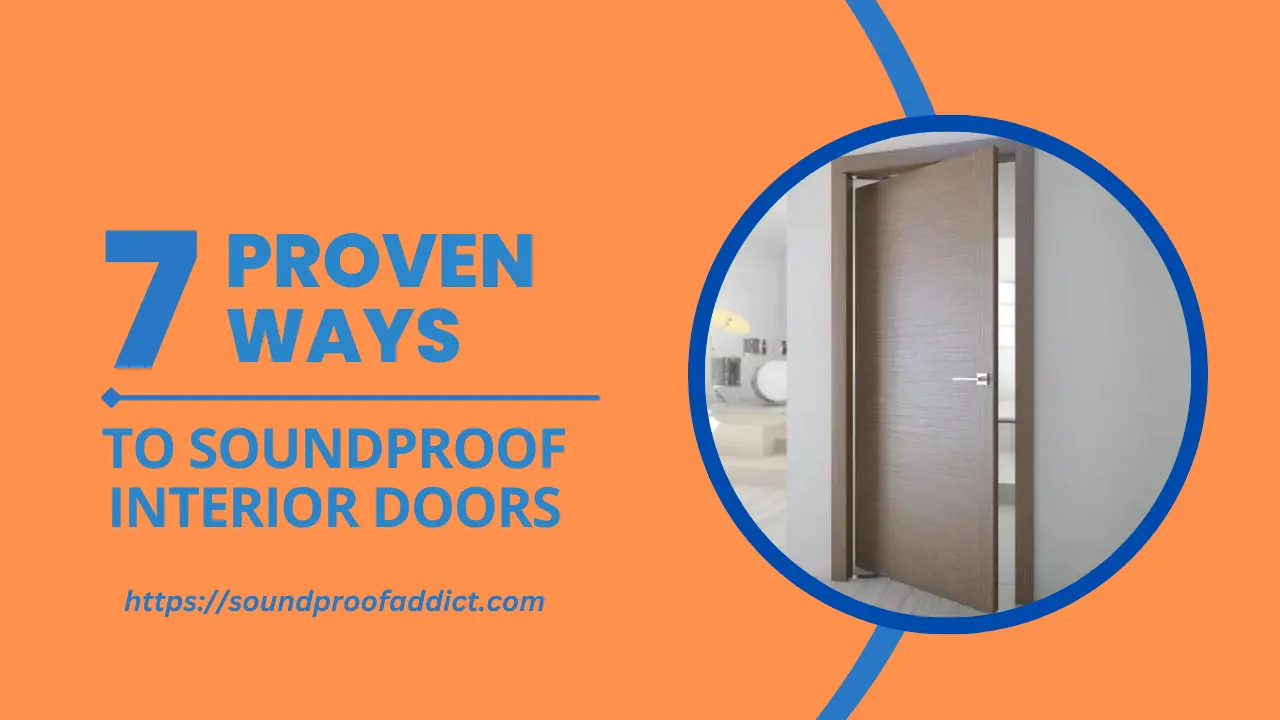
A little while back, I got an email from someone who was facing a common problem that you are also facing – noisy interior doors.
He was dealing with all sorts of sounds, from loud neighbors to barking dogs. Being fed by this, he wanted to soundproof his interior door and reduce the noise coming into the living space. But here’s the catch: he didn’t have a big budget to work with.
Now, if you’re nodding your head because you’re in the same boat, looking for a wallet-friendly way to quiet down your interior door, you’re in the right place. I’m here to help you with some practical and affordable ideas to soundproof an interior door.
But before that let set some baseline;
Why is your interior door allowing noise to come in?
If your interior door is allowing noise to enter, it’s likely due to several factors. First and one of the most common reasons for sound leakage is gaps around the door.
Well if this is not the case with your door then the door itself will probably be a hollow core door and these doors are the worst when it comes to blocking sound. Another reason could be the door’s materials.
Whether you have a solid core door but if it lacks good quality materials then this could be a reason for poor soundproofing. Quality matters. And the last reason could be an old or damaged door.
Over time, doors can warp or deteriorate, which can compromise their ability to block sound. These are some of the common reasons I found from my experience of soundproofing hundreds of doors.
7 Proven Ways to Soundproof an Interior Door
Here are the 7 tried-and-tested methods to soundproof an inside door. By applying this technique to your interior door you will notice a very little noise coming through the door.
1: Attach an acoustic door sweep and apply weatherstripping
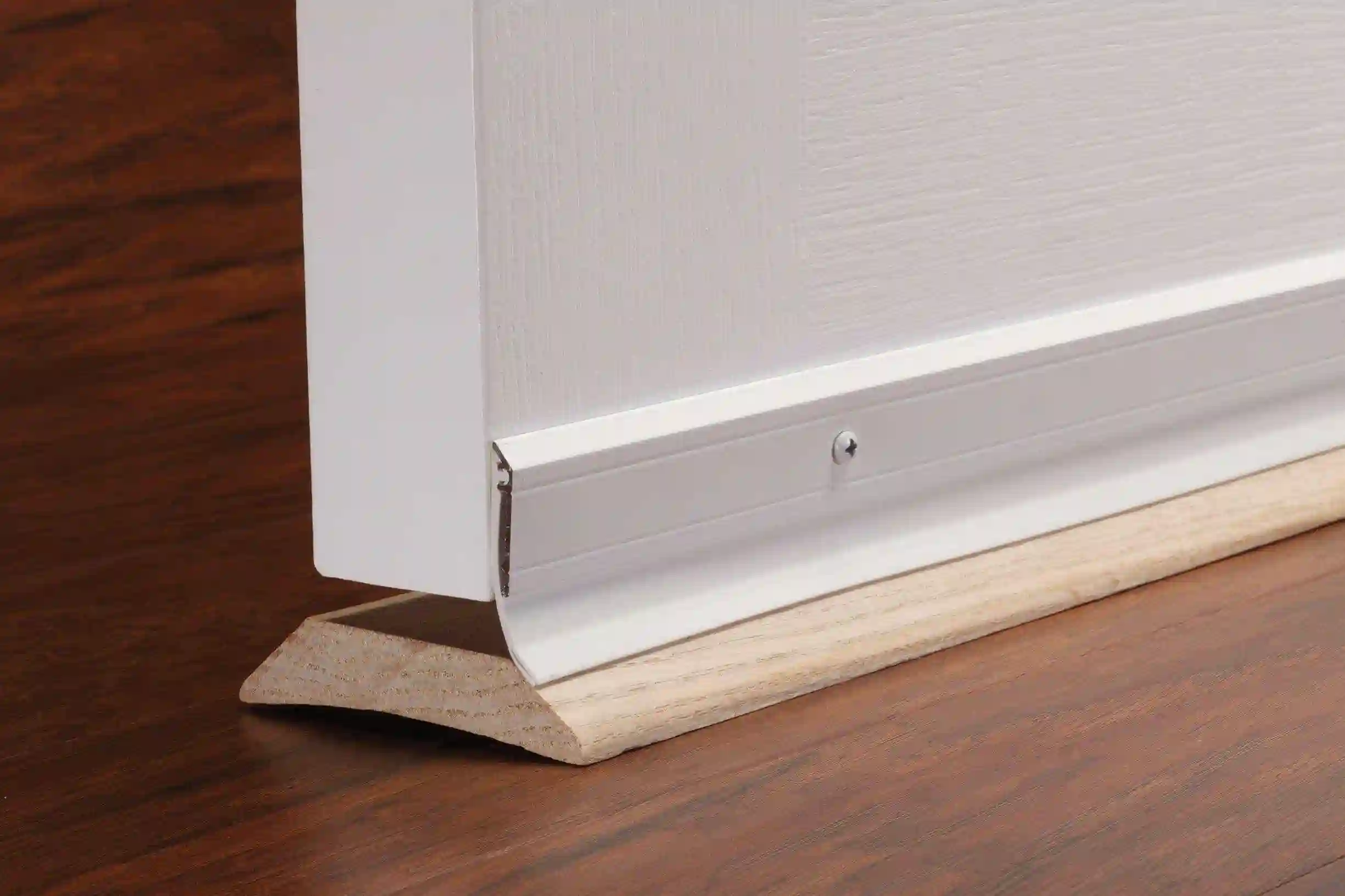
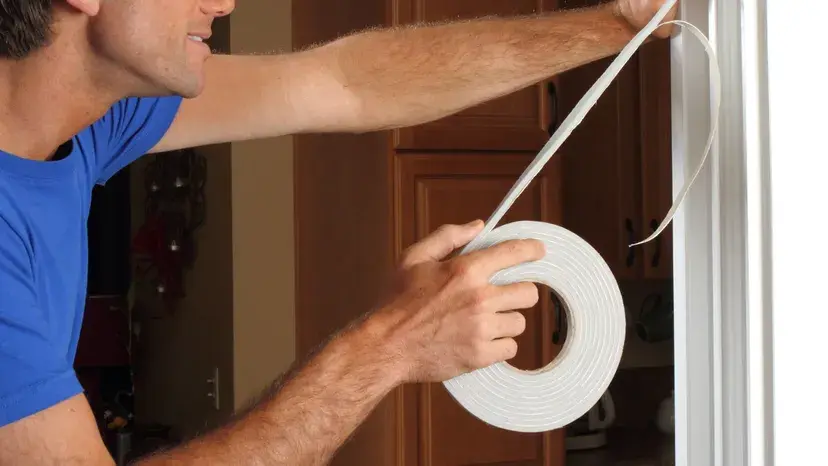
As mentioned earlier, a gap is a common reason for sound leakage, so you definitely need to pay attention to it and seal all the gaps that your interior door has.
Well, to seal gaps in your interior door to make it soundproof you will need to first identify the gaps.
The two common areas where you can find the gap is between the door and the frame and between the door and the floor.
To seal the gap between the door and the frame, apply adhesive-backed rubber weatherstrip tape around the perimeter of your interior door. Stick it all around the edge of your interior door.
And to seal the gap between the door and floor attach an acoustic door sweep at the bottom of your door. These two things are crucial, these are the first steps of a stair and you shouldn’t compromise in sealing them.
2: Fill the hollow core door with expanding foam
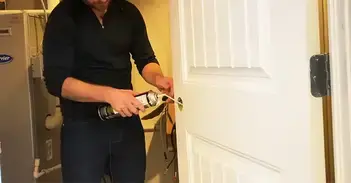
If you have a hollow core door then it is obvious that you are experiencing a lot of noise. The reason is simple- because the door is not solid and heavy enough to stop the noise and, these are some of the qualities that a door needs to have in order to reduce noise.
So to make your hollow interior door good at soundproofing you need to make it heavy and in my opinion, the best way to do it is to fill the door with expanding foam or spray foam.
To fill your hollow door with expanding foam, you will need:
- Few cans of expanding foam
- You’ll need a screwdriver to remove any existing hardware (e.g., doorknob, hinges).
- An utility knife for trimming excess foam after it has cured.
Step-by-Step Guide to Filling a Hollow Core Door with Expanding Foam:
Step 1: Start by removing the door from its hinges and laying it flat on a stable surface. Remove any hardware, such as doorknobs and hinges, using a screwdriver or drill.
Step 2: Locate a small hole that allows you to inject the foam into the hollow core. If you are unable to find any hole then you can create it, ideally, at the top of the bottom.
Step 3: Insert the nozzle of the expanding foam can into one of the access holes. Slowly inject the foam, allowing it to expand and fill the hollow core and avoid overfilling.
Step 4: Leave the door flat and allow the foam to cure as per the manufacturer’s instructions. This usually takes several hours.
Step 5: Once the foam has fully cured, use a utility knife to trim any excess foam protruding from the access holes.
Step 6: Reattach any hardware that was removed from the door, such as the doorknob and hinges.
Step 7: Finally, rehang the door on its hinges, ensuring it fits snugly within the frame.
After filling the door with expanding foam and reinstalling it properly, you will notice a huge improvement in the noise reduction ability of the door.
3: Attach a layer of MLV sheet and plywood to your door
If you are looking for an affordable way to soundproof an interior door then here’s a cost-effective solution: combine Mass-Loaded Vinyl (MLV) with a Plywood sheet.
Plywood is dense and heavy enough to do a decent job in reducing noise. But when you add a layer of MLV on top of it, you take its soundproofing abilities to a whole new level.
MLV, or mass-loaded vinyl, is a super-effective soundproofing material. In fact, according to soundproofcentral.com, it outperforms drywall when it comes to noise reduction.
This combination is particularly more effective for soundproofing hollow doors, however, you can use it to make a solid door more soundproof.
Alright, to soundproof an interior door by attaching plywood and mlv, you need to gather these martials first,
- Mass-Loaded Vinyl (MLV) Sheet
- Plywood sheet according to the size of your door
- Heavy-duty staple
- Screws
- Screwdriver/Drill
- Utility Knife
Once you have these materials in hand,
- Lay the MLV sheet to a flat surface then cut it according to your door’s dimensions.
- Next, use a heavy-duty staple gun to attach the MLV sheet onto the plywood.
- Now, take the MLV and plywood assembly and place it onto the surface of your door. The plywood side should face outward, while the MLV should be attached to the door itself.
- Use screws to attach the plywood to the door by spacing the screws evenly (6-8 inches) around the perimeter and through the center of the plywood.
Just to let me you know that, this techniques is best for sliding barn door soundproofing and for making a condo door soundproof.
4: Use acoustic blankets or curtains
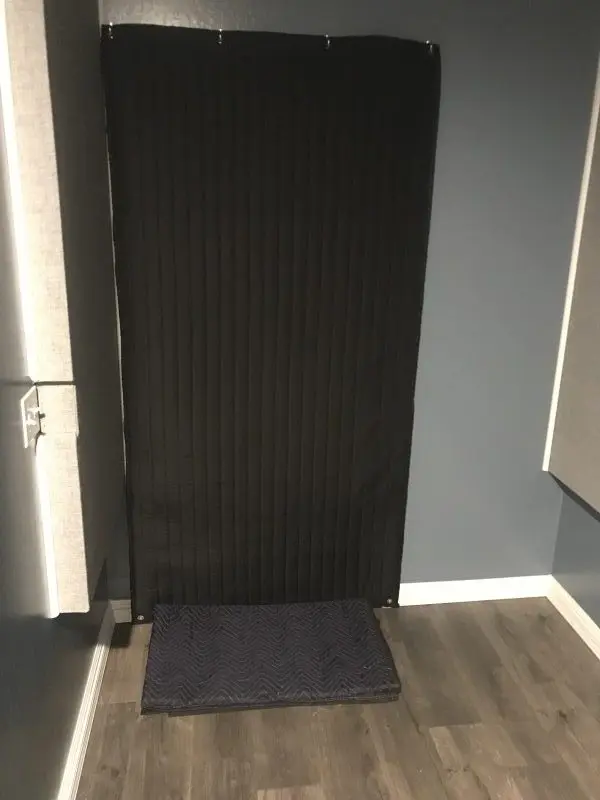
For making an inside door soundproof, acoustic blankets or curtains can be helpful. Acoustic blankets are the go-to for tackling mid to high-frequency sounds.
On the other hand, curtains are good at taking down those pesky high-frequency noises.
To use an acoustic curtain or blanket for soundproofing inside the door, just hang them to the door you want to soundproof.
In my opinion, acoustic blankets and curtains are best for making a louvered door soundproof and for silencing a pocket door.
5: Attach acoustic foam on both sides of the door
Acoustic foam panels are the cheapest sound absorbing for doors and walls. It absorbs the sound that tries to pass through it and reduces its impact.
However, they are not effective enough to provide you a quiet environment like a graveyard. But you can use them smartly to get an effective noise reduction.
And in my opinion, the best way to use these panels to soundproof a door is to stick them on both sides.
Purchase some good-quality adhesive-backed acoustic panels and attach them to both sides of your interior door to make it soundproof.
Related: How can I make my bifold door quieter?
6: Use a door handle stopper
Using a door handle stopper is a simple yet effective way to quiet an interior door. It is a device designed to reduce noise created by door handles when they hit the wall.
Still not understand how a door handle stopper can help you make your door quiet, if so, watch this video: https://www.youtube.com/watch?v=vJj0oqgoF0s
Now, to get used to it, find the point where the door handle hits the wall when the door is opened. Once you’ve got that place, just pop the stopper right there.
In case you have a big door, you might need to use more than one stopper, usually two or three to prevent the door from slamming to the wall.
7: Replace the door with a solid door
If you’re looking to make your indoor space quieter, the most effective way, in my opinion, is to replace your current hollow door with a thick, solid-core door.
However, if you already have a solid core door and it is still allowing a lot of sounds to pass through, think about replacing it with a soundproof door.
Now, let’s talk numbers. According to homeadvancement.com, a good-quality solid core door can start at around $400, which is a reasonable investment.
On the other hand, a full-on soundproof door cost anywhere between $1,200 to $4,000, which is quite expensive.
So take your time to think and make the decision based on your needs and your wallet. If your wallet allows and you are serious about reducing noise then go for a soundproof door. Otherwise, a solid core door would be a good choice.
Related: French door noise reduction methods
FAQs: Soundproofing an interior door
Q1. How to make an interior door quieter?
To make an interior door quieter, using a door handle stopper. It is basically a device that is used to prevent the door from hitting the wall and producing a loud annoying noise.
Q2. What are the best interior doors to block sound?
Solid-core doors are the best for blocking sound due to their greater mass. They are more effective at reducing noise transmission compared to hollow core or glass doors.
Q3. How to soundproof an interior door with glass?
In my perspective, the best way to soundproof an interior glass door is by adding heavy curtains, applying window film, or installing soundproof window inserts to the glass. (Learn: how to make a sliding glass door quieter)
Q4. How to soundproof an interior door from outside noise?
To soundproof an interior door from outside noise, use a 3-layer soundproofing curtain or attach a combination of mass-loaded vinyl and plywood.
Conclusion
To conclude, if you want to make your noisy interior door quieter without spending too much money, use the techniques that I have mentioned above.
From my perspective, combining Mass-Loaded Vinyl (MLV) and plywood is a top-notch choice for soundproofing your interior door. It might cost a bit more, but the results are well worth it.
And if you’re hungry for even more noise reduction, consider hanging soundproof curtains on the outside of your interior door.
Now, for those with some extra cash to spare, the ultimate route is replacing the door with a soundproof one.
That’s a wrap for this guide on how to make your interior door soundproof.
Thanks for tuning in, and I hope you found it super helpful. Don’t forget to explore our other posts on door soundproofing for even more tips and tricks!
Related: How to soundproof a bathroom door?
Also read: Noise-blocking through a roll-up garage door

How charming! You’ve created an absolutely amazing post here. I sincerely appreciate you sharing these details.